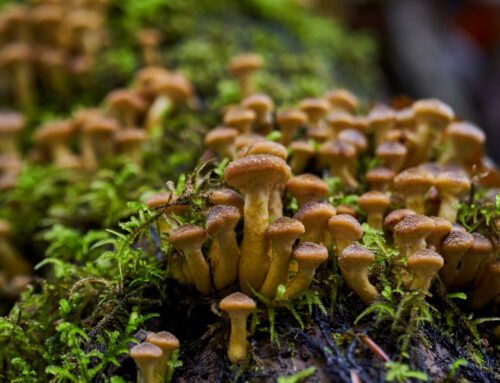In our previous two episodes about soil microbiomes, we discussed roles of fungi and bacteria.
Today we will look at soil viruses, which have been much less investigated than their counterparts in some other environments such as human gut or ocean.
From studies on other viruses we learned that they play diverse roles in microbial communities and there is no reason to assume otherwise in case of soil viruses.
What are possible roles of viruses in soil microbiomes?
Since early days of molecular biology, scientists described two kinds of infections of bacteria by their viruses – also known as ”bacteriophages” or simply “phages”. One kind of infection is if phage multiplies itself inside a bacterium, finally destroying (lysing) the host cell. New viral particles are then released infecting new cells. This kind of phages are called lytic phages.
Another possibility is that a phage inserts its DNA into the host cell and replicates every time when the host cell replicates. This kind of hidden infection is called lysogenic. It may be also possible that an inserted (aka “temperate” or “lysogenic”) phage detects unfavorable conditions for its replication and waits for the better times when it can turn again from lysogenic to lytic mode.
By destroying host cells, phages can actually control abundance of a particular cell type. For example, in a mixed bacterial population, an overgrowth of a particular bacterial species can be prevented. It is easy to imagine that a population of several different types of phages can maintain diversity of a whole microbiome.
In our interview with Dr. Sandro Sulakvelidze we previously discussed possible uses of phages for therapy of human infections and for food safety. Similarly, lytic phages can be used for biocontrol of bacterial plant diseases without use of antibiotics.
Another effect of destruction of the host cells is release of nutrients which are than used by other cells. In this way lytic viral infection can support growth of other organisms and help recycling of the nutrients, increasing soil fertility. An example of this is cycling of carbon in soil, which we will discuss in our next episode.
Finally, soil viruses can also accelerate evolution of the host by gene transfer. For example, a phage that is inserted into bacterial DNA can excise itself out, picking up a part of the host DNA in this process. If such phage enters another bacterial cell, it can bring a new metabolic function. Such genes are called AMGs (an abbreviation for “Auxilliary Metabolic Genes”) and btw, it has nothing to do with Mercedes cars 😉.
What are challenges of studies of viruses in the soil?
Viral diversity in soil is higher than in any other environment on Earth. However, when studying soil viruses there are different questions to be considered, such as:
- on which location in the soil? (e.g. around plant roots (Rhizosphere), bulk soil, soluble or in soil aggregates? )
- in which soil fraction: with cells or cell-free? (as already mentioned, some viruses are free from host cells while others are integrated in the host DNA and need to be isolated together).
- if togehter with other organisms – which one? bacteria, fungi (mycosphere) or others?
- in which type of the soil and under which weather conditions? (as physico-chemical properties of the soil can radically change).
All of the above and naturally high variability makes description and comparison of viral diversity in soil less accurate than in most of the other environments.
Before the era of “omics” technologies, electron microscopy was the main tool to analyze viral diversity. Advent of the Next Generation Sequencing (NGS) transformed the ways how we analyze genomes. However, we shouldn´t forget that while genetic material of other organisms is double-stranded DNA, viruses can have both DNA or RNA genomes, single-stranded or double-stranded. Depending on the type of virus, different sample preparation and nucleic acid isolation methods and various sequencing- and bioinformatic workflows are used. Sequencing of marker genes, which is a cheaper and easier alternative than sequencing of whole genomes, is often not a realistic option for many soil viruses because their potential marker-sequences are not known. Furthermore, to get insight into full viral diversity of a particular soil sample, combining data from sequencing of viral metagenomes (viromes) and metatranscriptomes is often needed. Finally, linking detected viral genome with a specific host or a function is a next-level challenge.
Thus, creation of platforms for sharing data and protocols between researchers is essential as well as building databases of known and unknown viruses. Great example in this sense is Integrated Microbial Genomics database (IMG/VR).
In the next episode we will discuss role of microbiomes for carbon cycling and climate change.
Follow us…
References:
- Pratama, A. A. & van Elsas, J. D. The ‘Neglected’ Soil Virome – Potential Role and Impact. Trends in Microbiology 26, 649–662 (2018).
- Roux, S. & Emerson, J. B. Diversity in the soil virosphere: to infinity and beyond? Trends in Microbiology S0966842X22001159 (2022) doi:10.1016/j.tim.2022.05.003.
- Paez-Espino, D. et al. IMG/VR: a database of cultured and uncultured DNA Viruses and retroviruses. Nucleic Acids Research 45, gkw1030 (2016).





